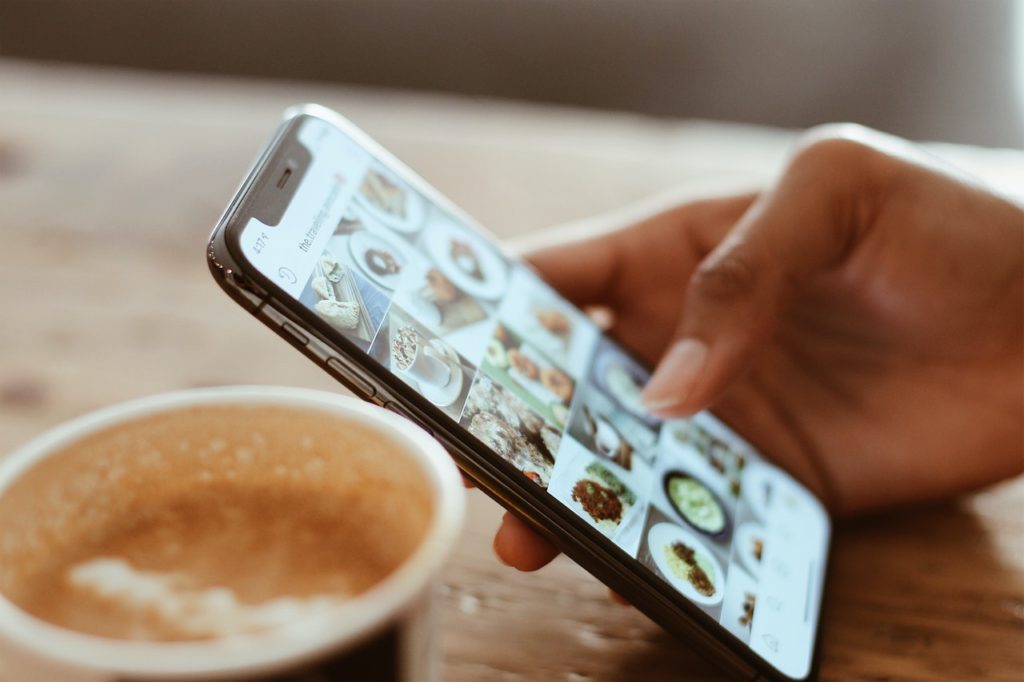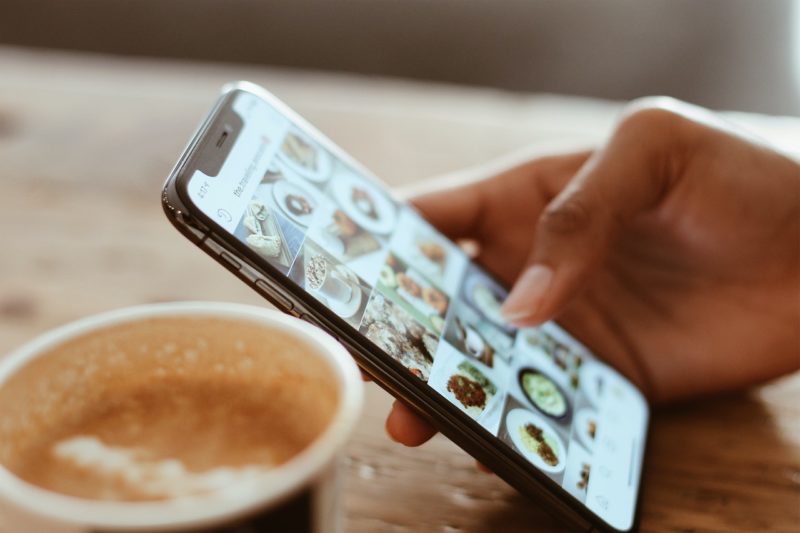In an age where online image sharing is more prevalent than ever thanks to the abundance of different social media platforms, the question of who has a right to use what photographs or creative visuals may appear increasingly complicated, but the truth is that similar copyright principles that apply to a physical photograph or artistic image also apply to pictures shared over social media. Continue reading for a discussion of social media platforms’ rights to the images posted by their users and for an explanation of Canadian copyright in images.
Social Media Platforms’ Rights to Images
In agreeing to the Terms and Conditions of use before posting to a social media platform, a user is most likely granting the platform a non-exclusive license to their images. In granting someone a license to use their image, the owner of the copyright retains ownership of and the “moral rights” to the work, but is providing the licensee with the “economic right” to use the material according to the terms set out in the licensing agreement. A licensing agreement can be made in exchange for money, publicity, or another form of compensation. The significance of this is that in granting a social media platform a non-exclusive license in exchange for the use of the platform, the social media platform is not given any ownership rights to a user’s posted images, but it does give them a right to use the images according to the language of the licensing agreement set out in the Terms and Conditions.
A non-exclusive license means that an individual who posts an image to a social media platform is able to grant licenses to their image to others as they see fit, but it also means that they would be unable to sell the same work under an exclusive license to someone else, unless they ended the non-exclusive license that they have with the platform. Depending on the specifics of the platform’s Terms and Conditions, it is possible that an individual can end their non-exclusive license by deleting their image from the social media platform or deleting their account.
Generally, a limitation on most social media platforms’ abilities to use an individual’s images in the above-mentioned ways, is that their use will most likely have to be consistent with an individual’s privacy and application settings. This means that the more private the settings are on an individual’s account, the less a platform is able to do with said individual’s images.
Finally, it is likely that the social media platform retains all rights to their own intellectual property in the original images, designs, videos, or sounds that they provide for users to add to their own content. This means that if an individual uses a design such as a geotag or a filter created by the platform in their image, the platform has the copyright over the portion of the image that is their original design. The rest of the image would still belong to the individual who created it. The significance of this is that the individual who created the image would not be able to use any part of the image that includes the platform’s original design in any way that could possibly affect the platform’s rights as the owner of the design’s copyright.
Why does the Creator Own the Copyright to their Visual Artistic Work and not the Social Media Company?
Ever since the 2012 Copyright Modernization Act came into effect, the copyright in a photograph is held by the individual who took the picture, unless that individual took the photograph in the process of their employment. Should that be the case, the photographer remains the author of the photograph, but the ownership of the copyright belongs to their employer, provided that certain conditions are met. The same guidelines apply to any other artistic work, including any original visual artistic work created by an artist.
A creator of a copyrighted work has both “economic rights” (the right to control the reproduction of a work and communication of a work to the public by telecommunication) and “moral rights” (which include the right to be associated with the work and for it not to be changed in any way without their permission). The photographer or creator of an image will always have the “moral rights” to their work and these cannot be assigned, even to an employer or license holder. If an individual takes a photograph or creates a visual in the course of their employment, they will not control the “economic rights” to their work. The “economic rights” will be held by the employer who is the owner of the copyright, but the creator will retain the “moral rights,” unless they waive said rights.
The significance of these rules is that if a photographer or creator has made an image outside of the course of their employment, they have the exclusive rights to reproduce or authorize the reproduction of their work and the exclusive right to communicate their work to the public by telecommunication for the duration of the term of copyright protection over the work. If a photographer or creator has made an image either inside or outside the course of their employment, they will have the right to the integrity of the work and the right to be associated with it or remain anonymous, unless they have waived this right.
The term of copyright protection in Canada is currently to the end of the calendar year 50 years after the death of the copyright creator. Thus, any image the creator of which died more than 50 years ago is part of the “public domain” and anyone can use it. However, it should be noted that the term of protection in Canada will soon be extended to the life of the author plus 70 years as part of the implementation of the Canada-United-States-Mexico Agreement (CUSMA).
Takeaways
Generally, if an individual creates an image, they own the copyright to it and the right to control its use, unless the individual created the image in the course of their employment or someone uses the image for a purpose that is considered an exception under the Copyright Act.
An individual has the right to enter into licensing agreements for the use of their original images and in posting such an image to a social media platform, an individual can exercise this right by entering into a licensing agreement with the platform, the terms of which will likely depend on the individual’s privacy settings.
Learn more about our copyright practice.

Images et droit d’auteur à l’ère des médias sociaux – 11 août 2021
À une époque où le partage d’images en ligne est plus répandu que jamais en raison des multiples plateformes de médias sociaux, la question de savoir qui a le droit d’utiliser quelles photographies ou quels éléments graphiques peut sembler de plus en plus compliquée. Or, dans les faits, les principes de droit d’auteur qui s’appliquent aux photographies ou images artistiques sur support physique s’appliquent de façon similaire aux images partagées sur les réseaux sociaux. Poursuivez votre lecture pour mieux comprendre les droits qu’ont les plateformes de médias sociaux sur les images publiées par leurs usagers et pour en savoir plus sur le droit d’auteur canadien relativement aux images.
Les droits des plateformes de médias sociaux sur les images
Avant de publier du contenu sur une plateforme de médias sociaux, un usager doit vraisemblablement accepter les conditions générales d’utilisation de cette plateforme. De ce fait, l’usager octroie fort probablement une licence non exclusive sur ses images à la plateforme. En octroyant à autrui une licence d’utilisation sur une ou plusieurs de ses images, le titulaire du droit d’auteur conserve la propriété de son œuvre et les « droits moraux » à son égard, mais accorde au détenteur de licence le « droit économique » d’utiliser l’objet conformément aux conditions énoncées dans le contrat de licence. Le contrat de licence peut être conclu en échange d’argent, de publicité ou d’une autre forme de compensation. Lorsqu’on octroie à une plateforme de médias sociaux une licence non exclusive en échange de l’utilisation de la plateforme, cette dernière ne reçoit aucun droit de propriété sur les images publiées par l’usager, mais la licence lui donne le droit d’utiliser les images conformément aux modalités du contrat de licence, définies dans les conditions générales d’utilisation.
Une licence non exclusive permet à l’usager qui publie une image sur une plateforme de médias sociaux d’octroyer des licences sur cette image à d’autres personnes, comme bon lui semble. Cependant, cet usager ne pourrait cependant pas vendre cette même œuvre à quelqu’un d’autre sous une licence exclusive, à moins d’avoir mis fin à la licence non exclusive concédée à la plateforme. Selon les conditions générales d’utilisation particulières de la plateforme, un usager peut parfois mettre fin à la licence non exclusive qu’elle a concédée en supprimant son image de la plateforme de médias sociaux ou en supprimant son compte.
En règle générale, la plupart des plateformes de médias sociaux peuvent utiliser les images d’un usager de la manière susmentionnée jusqu’à un certain point : leur utilisation devra probablement être compatible avec certains paramètres déterminés par l’usager, notamment ceux concernant la confidentialité. Cela signifie que plus les paramètres du compte sont privés, moins une plateforme peut faire de choses avec les images de l’usager.
Enfin, il est probable que la plateforme de média social conserve tous les droits de propriété intellectuelle sur les images, les dessins, les vidéos ou les sons originaux qu’elle fournit aux usagers pour qu’ils les ajoutent à leur propre contenu. Par exemple, si un usager utilise un dessin créé par la plateforme (p. ex., un marqueur géographique ou un filtre) dans son image, la plateforme est titulaire du droit d’auteur sur la partie de l’image correspondant à son dessin original. Le reste de l’image continue d’appartenir à la personne qui l’a créée. Autrement dit, l’usager qui a créé l’image ne peut utiliser aucune partie de l’image comprenant le dessin original de la plateforme d’une manière qui pourrait avoir une incidence sur les droits de la plateforme en tant que titulaire du droit d’auteur du dessin.
Pourquoi le créateur détient-il le droit d’auteur sur son œuvre artistique visuelle, et non l’entreprise de médias sociaux?
Depuis l’entrée en vigueur de la Loi sur la modernisation du droit d’auteur en 2012, le droit d’auteur sur une photographie est détenu par la personne qui a pris la photographie, sauf si cette dernière l’a prise dans le cadre de son emploi. Si c’est le cas, le photographe demeure l’auteur de la photographie, mais la propriété du droit d’auteur revient à son employeur, sous certaines conditions. Les mêmes directives s’appliquent à toute autre œuvre artistique, y compris toute œuvre artistique visuelle originale créée par un artiste.
Le créateur d’une œuvre protégée par le droit d’auteur possède à la fois des « droits économiques » (le droit de contrôler la reproduction d’une œuvre et sa communication au public par télécommunication) et des « droits moraux » (qui comprennent le droit d’être associé à l’œuvre et qu’elle ne soit modifiée d’aucune façon sans sa permission). Le photographe ou le créateur d’une image aura toujours les « droits moraux » sur son œuvre. Ces derniers ne peuvent pas être cédés – pas même à un employeur ou à un détenteur de licence. Si une personne prend une photographie ou crée un élément graphique dans le cadre de son emploi, elle ne possédera pas les « droits économiques » de son œuvre. Les « droits économiques » seront détenus par l’employeur qui est titulaire du droit d’auteur, mais le créateur conservera les « droits moraux », sauf s’il y renonce.
Ces règles signifient que si un photographe ou un créateur a produit une image en dehors du cadre de son emploi, il a le droit exclusif de reproduire son œuvre ou d’en autoriser la reproduction et le droit exclusif de communiquer son œuvre au public par télécommunication pendant la durée de la protection conférée par droit d’auteur sur cette œuvre. Si un photographe ou un créateur a produit une image – dans le cadre de son emploi ou non –, il aura le droit à l’intégrité de l’œuvre et le droit d’y être associé ou de demeurer anonyme, sauf s’il a renoncé à ce droit.
La durée de la protection conférée par droit d’auteur au Canada s’étend actuellement sur une période de 50 ans suivant la fin de l’année civile du décès du créateur. Ainsi, toute image dont le créateur est décédé il y a plus de 50 ans fait partie du « domaine public » et n’importe qui peut l’utiliser. Il est à noter que la durée de la protection au Canada sera bientôt étendue à la vie de l’auteur plus 70 ans dans le cadre de la mise en œuvre de l’Accord Canada–États-Unis–Mexique (ACEUM).
Ce qu’il faut retenir
En général, si une personne crée une image, elle est titulaire du droit d’auteur pour cette image et a le droit d’en contrôler l’utilisation, sauf si elle a créé l’image dans le cadre de son emploi ou si quelqu’un utilise l’image à une fin considérée comme une exception en vertu de la Loi sur le droit d’auteur.
Toute personne a le droit de conclure des contrats de licence pour l’utilisation de ses images originales. Lorsqu’une personne publie une telle image sur une plateforme de médias sociaux, elle peut exercer ce droit en concluant un contrat de licence avec la plateforme; les modalités de ce contrat dépendront probablement des paramètres de confidentialité de son compte.
Découvrez notre pratique spécialisée en droit d’auteur.
Kiera Boyd practices in the area of communications, with a particular emphasis on copyright.
Kiera graduated from the Faculty of Law at the University of Western Ontario. Prior to law school, she completed an Honours Bachelor of Arts in English Literature with a minor in Political Science at Queen’s University. During her summers throughout school, Kiera worked as an Administrative Assistant at a large national firm, where she was part of the Intellectual Property Team.


